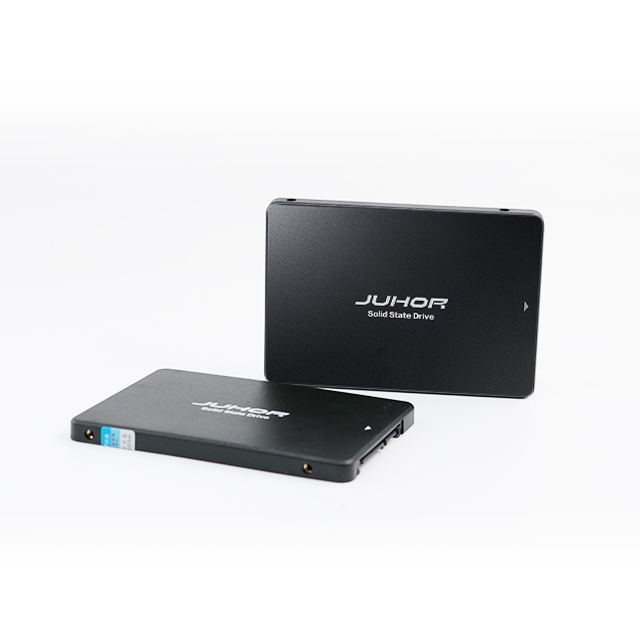Storage technology has evolved quickly, and M.2 SSDs have become the new standard for modern computers. Their small size, faster speed, and lower power consumption make them perfect for laptops, desktops, and even gaming consoles. Compared with traditional hard drives and older mSATA SSDs, M.2 SSDs offer much higher data transfer rates and a simpler installation process.
If you are looking for an upgrade, you may be wondering: Should you choose NVMe or SATA? PCIe 3.0 or 4.0? With DRAM cache or without it? Let’s break it down step by step.

Before M.2 SSDs became popular, mSATA SSDs were widely used. However, mSATA drives had limitations—they followed the SATA 3.0 interface, which is capped at 6Gb/s, and most models were limited to 1TB capacity.
M.2 SSDs solved these problems by supporting both SATA and PCIe interfaces, allowing for higher speeds and larger capacities. They also save space because they don’t need extra power or data cables. If you are replacing an old mSATA drive, an M.2 SSD is a clear upgrade.
There are two main types of M.2 SSD protocols, and each has its advantages.
SATA M.2 SSDs are slower, with a maximum transfer speed of 6Gb/s, but they are affordable and compatible with almost all systems, including older motherboards. They also use less power, making them ideal for everyday office work, web browsing, and budget laptops.
NVMe SSDs use the PCIe interface, which allows direct communication with the CPU for much faster speeds. PCIe 4.0 NVMe drives can reach 5000–7000MB/s, making them perfect for gaming, video editing, and 3D rendering. However, they are more expensive and require a compatible motherboard.
Older systems → SATA M.2 SSD
High-performance gaming or creative work → NVMe M.2 SSD
Tight budget but need faster boot times → Start with SATA, upgrade to NVMe later
If you choose an NVMe SSD, you will need to pick a PCIe version.
PCIe 3.0: Speeds up to 3500MB/s, which is enough for most users.
PCIe 4.0: Doubles the bandwidth, reaching 5000–7000MB/s. It is best for professionals who handle large files daily.
PCIe 5.0: Even faster but still expensive and requires the latest hardware.
Always check whether your motherboard and CPU support PCIe 4.0 or 5.0; otherwise, you won’t see the full speed.
Another important factor is whether the SSD has DRAM cache.
With DRAM Cache: Stores mapping tables for faster response, making it better for large file transfers and heavy workloads.
DRAM-less SSD: Cheaper and fine for daily use, web browsing, or light gaming.
If you work with big files or want the most stable speed, go for a DRAM cache SSD. But if you only need faster boot times and app loading, a DRAM-less drive is enough.
M.2 SSD sizes are written as four or five digits, such as 2280. The first two numbers are the width (22mm), and the rest show the length.
Common sizes include:
2280 – the most popular, used in desktops and laptops
2230, 2242 – for compact devices like ultrabooks
22110 – for enterprise servers
Always check your device specifications to avoid buying an incompatible size.
The notches on the SSD connector (keys) determine whether it fits your motherboard slot.
B Key: Supports SATA and PCIe x2, slower speeds (0.5–1GB/s)
M Key: Supports PCIe x4, faster speeds (2GB/s or higher) – best for gaming and professional use
B+M Key: More compatible but limited to PCIe x2 speeds
Check your motherboard manual to confirm which key type it supports.

Here’s a quick recommendation based on different needs:
Basic Office Use → SATA M.2 SSD, 256–512GB
Gaming → NVMe PCIe 4.0 SSD, at least 1TB
Video Editing / 3D Work → NVMe PCIe 4.0 or 5.0 SSD, 1TB+, with DRAM cache
Budget Users → Combine NVMe for OS and SATA for storage to balance cost and speed
When choosing an M.2 SSD, focus on protocol, PCIe version, DRAM cache, capacity, and compatibility. For most users, PCIe 3.0 NVMe SSDs already provide great performance, while professionals and gamers may prefer PCIe 4.0 or even 5.0.
By matching your SSD choice with your actual needs, you can enjoy faster boot times, smoother gaming, and a more responsive system without overspending.